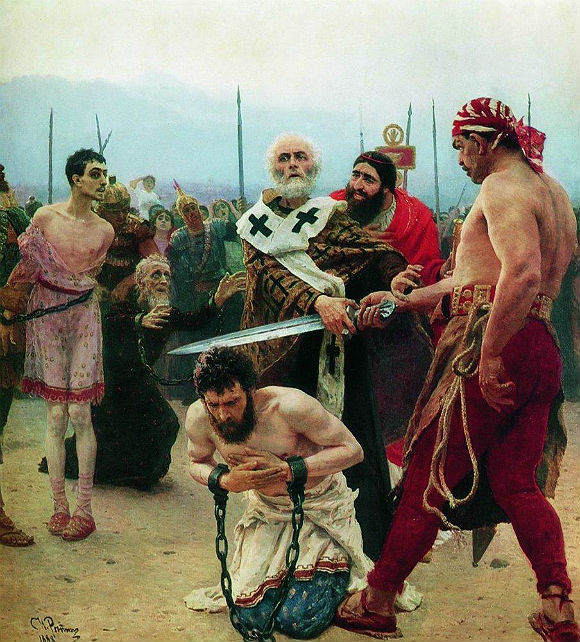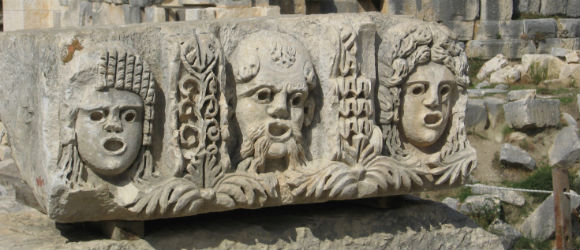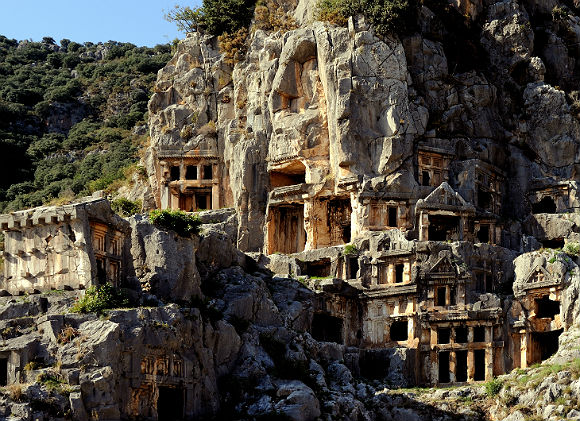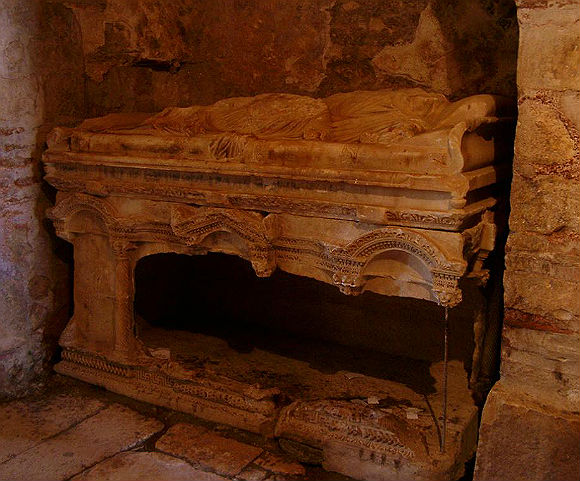Myra is one of the ancient coastal cities of the Guif of Antalya visited by Paul, Luke, and Aristarchus (Acts 27:5-6). It is where as prisoners they changed boats on their way to Rome in 60 or 61 AD. In Myra the centurion Julius found a ship from Alexandria headed to Italy by way of Cnidus. They had hard sailing throughout the whole trip; Luke’s account speaks of headwinds from Sidon to Myra, slow headway to Cnidus, wind continuing against them to Crete, and the fierce northeastern Boreas that raged for days on end and finally shipwrecked them in Malta.
For foreigners the most interesting ruin in Myra today is the Church of St. Nicholas built over the tomb of the saint who was martyred during the reign of Diocletian. The church is not much to look at. Its foundations go back to the fourth century when Nicholas was bishop of Myra. During the invasions of the Saracens in the eleventh century the saint’s bones may have been moved to Bari in southern Italy where his fame increased. In fact, he is known as Nicholas of Bari in many parts of the world. He is the patron saint of the Russian, Greek, and Sicilian people, of children, and of sailors. (Myra was the seat of the god of pagan sailors also.)
The legend about St. Nicholas in Myra concerns a poor man who had three marriageable daughters but no way to provide their necessary dowries. St. Nicholas clipped under their window one night and tossed three purses of gold into the house to save them from prostitution. These three purses have become the three gold balls identifying a pawnbroker’s shop. This custom of giving gifts in secret, first observed on the eve of his day, December 6, was moved to December 25 and his name corrupted to Santa Claus.
In addition to the ruins of the church there is a Roman theater in Myra and an unusual rock necropolis.

Saint Nicholas of Myra Saves Three Innocents from Death (oil painting by Ilya Repin, 1888, State Russian Museum).





One of the best preserved churches we have visited. The paintings are wonderful. Plenty of camera use. It makes you think how our modern day buildings will be in that many years.
We enjoyed our visit to this lovely old church with its connection to Santa Claus, some of the frescos and floors are surprisingly well preserved. It was a very peaceful place. Unfortunately it seems the public toilets there have not been cleaned since the church was built, avoid them, even if you are desperate !!!
amust see place just unbelievable,we only had about 45 mins at this site cos we were running late on are coach tour coulda stayed for a couple of hours to get into the real feel of this place,
An amazing visit, a must see,very casual site to spend time at,very little restrictions in what you can see.Go early to miss the crowds.
Byzantine church, quite well preserved in parts. Renovated last year. Most of church is 12th century. Beautiful masonry and paintings in Greek Orthodox style. Church is popular with Russians as it is church of Their national saint. Many over prices icons are sold by eager Turks to pilgrims in surrounding area.
Worthy of a visit – amazing amphitheatre. The rock tombs look great but you can't go in so can be equally well seen from outside.
Just really interesting. Needs renovation but the frescos are really lovely
Myra is one of the major ancient cities in Lycia region. We saw very interesting rock cut tombs, but we did not have a chance to explore. The theatre, with the capacity of 5000 people, was in a good mood. The church of Santa Claus is also recommended.
What a fantastic sight. You need a good few hours & your camera at the ready. It was just so great to see. We arrived mid afternoon when many of the tour buses were leaving which was great.
In a really good condition the ruins still are. I enjoyed this place very much. It is worth to visit this place.